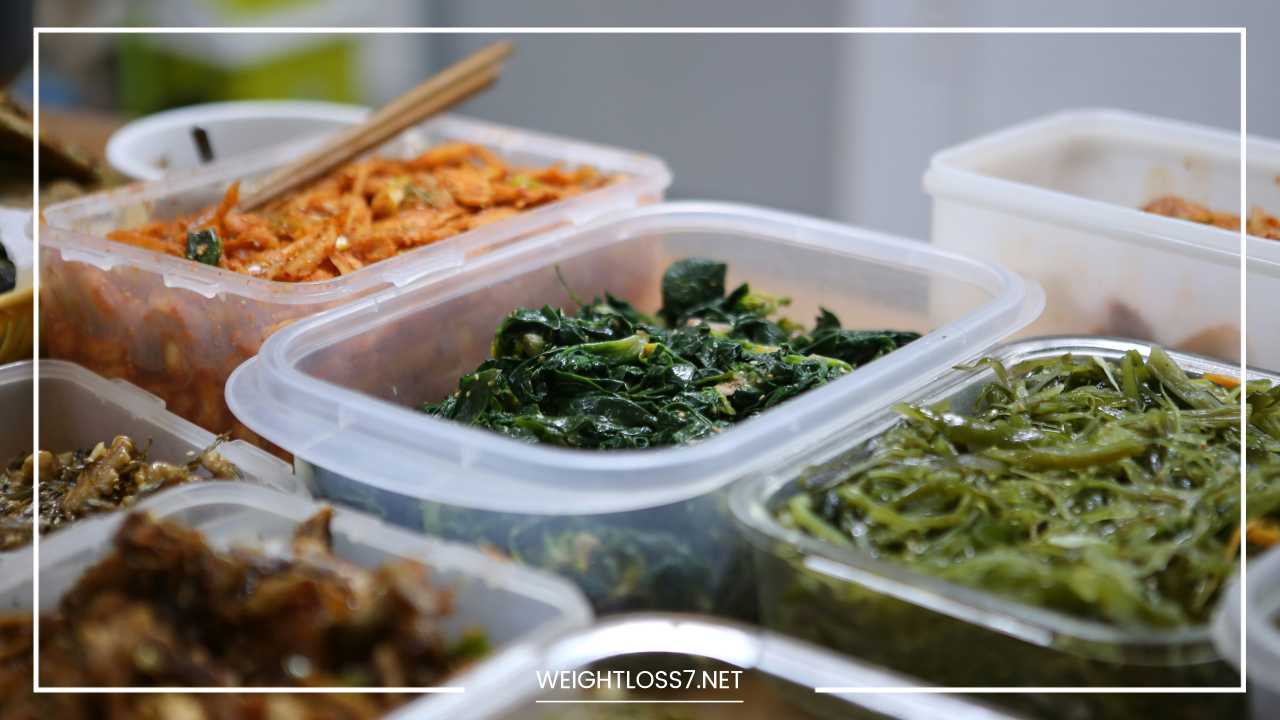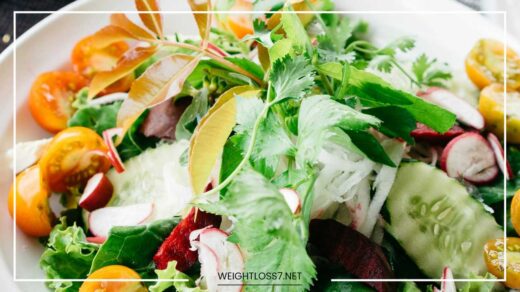Conquer Your Week with a Healthy Eating Meal Plan

Healthy Eating Meal Plan
Conquer Your Week with a Healthy Eating Meal Plan: A Comprehensive Guide
We all know the importance of healthy eating. It fuels our bodies, keeps our minds sharp, and promotes overall well-being. But let’s be honest, between juggling work, family, and a social life, building a healthy meal plan can feel like another item on a never-ending to-do list. This post is here to change that.
Why Meal Planning Matters
Before diving into specifics, let’s explore the many benefits of creating a personalized meal plan:
- Saves Time and Money: Planning eliminates last-minute grocery runs and impulsive unhealthy choices at the store. You’ll buy only what you need, reducing food waste and saving precious money.
- Boosts Nutrition: With a plan, you can ensure you’re incorporating a variety of food groups for a balanced diet rich in essential vitamins, minerals, and fiber. Consistency is key to good health, and meal planning helps you achieve that.
- Reduces Stress: No more “what’s for dinner?” panic. Knowing meals are planned takes a mental load off, leaving you free to focus on other things. It’s like having a roadmap for your week’s nutrition.
- Promotes Healthy Habits: Meal planning encourages consistent healthy choices, making it easier to stick to your goals in the long run. It helps you build a routine that supports your overall well-being.
Building Your Personalized Healthy Meal Plan
Now, let’s get down to business! Here’s a step-by-step guide to crafting your personalized healthy meal plan, tailored to your unique needs and preferences:
-
Consider Your Needs and Goals:
- Dietary Restrictions: Do you have allergies, intolerances, or follow a specific diet (vegetarian, vegan, pescatarian, etc.)? Knowing your limitations is key to building a plan that works for you.
- Calorie Needs: Estimate your daily calorie needs based on your activity level and goals (weight loss, maintenance, muscle gain). There are many online calculators available, but consulting a registered dietitian is ideal for personalized guidance.
- Preferences: What do you enjoy eating? Pick meals you’ll actually look forward to. This way, you’ll be more likely to stick to your plan and avoid unhealthy temptations. Consider incorporating cuisines or cooking styles you find interesting to add variety and keep things exciting.
-
Stock Your Pantry and Fridge:
- Pantry Staples: These are the workhorses of your healthy meal plan. Stock up on whole grains (brown rice, quinoa, whole-wheat pasta), canned beans and lentils, nuts and seeds, dried fruit, and healthy oils (olive, avocado). Consider shelf-stable protein sources like canned tuna or salmon for quick and easy meal options.
- Fresh Produce: Aim for a rainbow of fruits and vegetables for variety and essential nutrients. Leafy greens, berries, citrus fruits, and cruciferous vegetables (broccoli, cauliflower) are all excellent choices.
- Protein Sources: Lean meats, fish, eggs, tofu, tempeh, beans, and lentils are great protein sources to build into your meals. Consider plant-based proteins a few times a week for a sustainable and eco-friendly approach.
-
Plan Your Meals: Now comes the fun part: putting it all together! Here’s a breakdown of meals and snacks to consider:
- Breakfast: Prioritize whole grains, protein, and healthy fats to keep you energized all morning. Think oatmeal with nuts and berries, whole-wheat toast with avocado and eggs, or a Greek yogurt parfait with fruit and granola.
- Lunch: Focus on balanced meals with a mix of protein, complex carbohydrates (whole grains, starchy vegetables), and healthy fats. Leftovers from dinner can be a great option for lunch. Salads with grilled chicken or fish, veggie wraps with hummus, or lentil soup with a whole-wheat roll are all good choices.
- Dinner: This can be your biggest meal of the day. Include a protein source, plenty of vegetables, and a whole grain. Baked salmon with roasted vegetables and brown rice, vegetarian chili with a side of quinoa, or turkey stir-fry with brown rice noodles and mixed vegetables are examples of well-rounded dinners.
- Snacks: Plan healthy snacks to curb hunger between meals and prevent overeating at main meals. Choose fruits with nuts or yogurt, veggie sticks with hummus, a small handful of trail mix, or sliced vegetables with a light yogurt dip are all good options. Opt for whole, unprocessed foods whenever possible.
Sample Healthy Meal Plan for a Week (with Variations):
Here’s a sample meal plan to inspire you. Feel free to adjust portion sizes and ingredients to suit your preferences and needs. We’ve included variations for some meals to cater to different dietary restrictions and taste buds. Let’s dive in!
Monday
- Breakfast:
- Option 1: Greek yogurt with berries, granola, and a drizzle of honey. (Vegetarian, Gluten-free option: Use gluten-free granola)
- Option 2: Scrambled eggs with chopped spinach, whole-wheat toast, and a slice of avocado. (Vegetarian option: Omit eggs)
- Lunch:
- Option 1: Tuna salad sandwich on whole-wheat bread with a side salad. (Gluten-free option: Use lettuce wraps instead of bread)
- Option 2: Leftover lentil soup from Sunday’s dinner with a side of whole-wheat crackers. (Vegan)
- Dinner:
- Baked salmon with roasted vegetables and brown rice. (Gluten-free)
- Snacks:
- Apple slices with almond butter. (Vegetarian)
- Carrot sticks with hummus. (Vegan)
Tuesday
- Breakfast:
- Option 1: Oatmeal with chopped nuts and a drizzle of maple syrup. (Vegetarian, Vegan option: Use plant-based milk)
- Option 2: Smoothie made with Greek yogurt, spinach, banana, and protein powder. (Vegetarian, Gluten-free option: Use plant-based yogurt and gluten-free protein powder)
- Lunch:
- Chicken stir-fry with brown rice noodles and mixed vegetables. (Gluten-free option: Use gluten-free soy sauce)
- Dinner:
- Lentil soup with a whole-wheat roll and side salad. (Vegan)
- Snacks:
- Handful of mixed nuts. (Vegetarian, Vegan)
- Pear with a string cheese. (Vegetarian)
Wednesday
- Breakfast:
- Whole-wheat pancakes with berries and a drizzle of maple syrup. (Vegetarian, Gluten-free option: Use gluten-free pancake mix)
- Lunch:
- Leftover lentil soup with a side of whole-wheat crackers. (Vegan)
- Dinner:
- Vegetarian chili with a side of brown rice and a dollop of Greek yogurt. (Vegetarian)
- Snacks:
- Bell pepper slices with guacamole. (Vegetarian)
- Banana with a sprinkle of cinnamon. (Vegan)
Thursday
- Breakfast:
- Option 1: Smoothie made with Greek yogurt, spinach, banana, and protein powder. (Vegetarian, Gluten-free option: Use plant-based yogurt and gluten-free protein powder)
- Option 2: Whole-wheat toast with mashed avocado, a fried egg, and a sprinkle of everything bagel seasoning. (Vegetarian option: Omit egg)
- Lunch:
- Turkey and vegetable wrap on a whole-wheat tortilla with a side of fruit salad. (Gluten-free option: Use lettuce wraps instead of a tortilla)
- Dinner:
- Baked tofu with roasted Brussels sprouts and quinoa. (Vegan)
- Snacks:
- Edamame pods. (Vegan)
- Sliced cucumber with a sprinkle of feta cheese. (Vegetarian)
Friday
- Breakfast:
- Scrambled eggs with chopped vegetables (mushrooms, peppers, onions) and a slice of whole-wheat toast. (Vegetarian option: Omit eggs)
- Lunch:
- Black bean burgers on whole-wheat buns with a side salad. (Vegan option: Use a vegan burger patty)
- Dinner:
- Salmon with roasted sweet potatoes and green beans. (Gluten-free)
- Snacks:
- Greek yogurt with granola and a drizzle of honey. (Vegetarian, Gluten-free option: Use gluten-free granola)
- Baby carrots with hummus. (Vegan)
Weekend:
The weekend offers more flexibility for meal planning. Here are some ideas to get you started:
-
Saturday:
- Breakfast: Enjoy a leisurely brunch with friends or family. Try whole-wheat pancakes with berries and a maple syrup drizzle, eggs Benedict with smoked salmon on whole-wheat English muffins, or a breakfast burrito with scrambled eggs, black beans, salsa, and avocado wrapped in a whole-wheat tortilla.
- Lunch: Opt for a lighter lunch like a salad with grilled chicken or tofu, a veggie burger on a whole-wheat bun, or a wrap with hummus and roasted vegetables.
- Dinner: Treat yourself to a delicious and healthy dinner you might not have time for during the week. Consider grilled steak with roasted asparagus and quinoa, baked cod with lemon and dill served with roasted sweet potato fries, or a vegetarian lasagna packed with vegetables and whole-wheat noodles.
- Snacks: Enjoy fresh fruit with a dollop of Greek yogurt, homemade trail mix with nuts, seeds, and dried fruit, or frozen yogurt with berries and granola.
-
Sunday:
- Breakfast: Meal prep for the week ahead! Make a big batch of overnight oats for quick grab-and-go breakfasts, or bake a pan of breakfast muffins packed with protein and veggies. Scrambled eggs with whole-wheat toast and avocado is another quick and satisfying option.
- Lunch: Leftovers from dinner are a great option for lunch on Sundays. Alternatively, whip up a quick and easy sandwich with whole-wheat bread, lean protein like leftover chicken or turkey, and your favorite vegetables.
- Dinner: Keep it simple with a frittata packed with vegetables and cheese, or a pot of vegetable soup served with a whole-grain side like crusty bread.
- Snacks: Enjoy fresh fruit with a sprinkle of nut butter, veggie sticks with guacamole, or a handful of air-popped popcorn with a light drizzle of olive oil and spices.
Meal Prep Tips for Busy Weeks:
If you have a particularly busy week ahead, consider dedicating some time on the weekend to meal prepping. Here are some tips to streamline the process:
- Double Up on Dinners: Cook a large batch of a single dinner recipe and portion it out for two meals. This saves cooking time and ensures you have healthy leftovers on hand.
- Prepare Salads in Advance: Wash and chop vegetables for salads in advance. Store them in airtight containers in the refrigerator for easy assembly throughout the week.
- Cook Grains in Bulk: Cook a large pot of quinoa, brown rice, or another whole grain at the beginning of the week. You can use it in various dishes throughout the week.
- Portion Out Snacks: Pre-portion snacks like nuts, fruits, and yogurt into individual containers for grab-and-go convenience. This helps control portion sizes and prevents overeating.
Remember, consistency is key! The more you practice meal planning, the easier it will become. Don’t be discouraged if you have a setback; just get back on track with your next meal.
Additional Tips for a Successful Meal Plan:
- Involve the Family: Get everyone involved in the meal planning process. Let your family members choose recipes or suggest ingredients they enjoy. This can make them more invested in sticking to the plan.
- Get Creative! Don’t be afraid to experiment with different flavors and cuisines. There are endless possibilities for healthy and delicious meals. There are also many online resources for healthy recipes to inspire you.
- Enjoy the Process: Think of meal planning as an investment in your health and well-being. It’s a way to nourish your body and fuel your energy levels. The more you enjoy the process, the more likely you are to stick with it in the long run.
Meal planning doesn’t have to be a chore. With a little planning and preparation, you can create a healthy eating plan that works for you and your family. By taking control of your meals, you’re taking control of your health and setting yourself up for a lifetime of well-being.

















